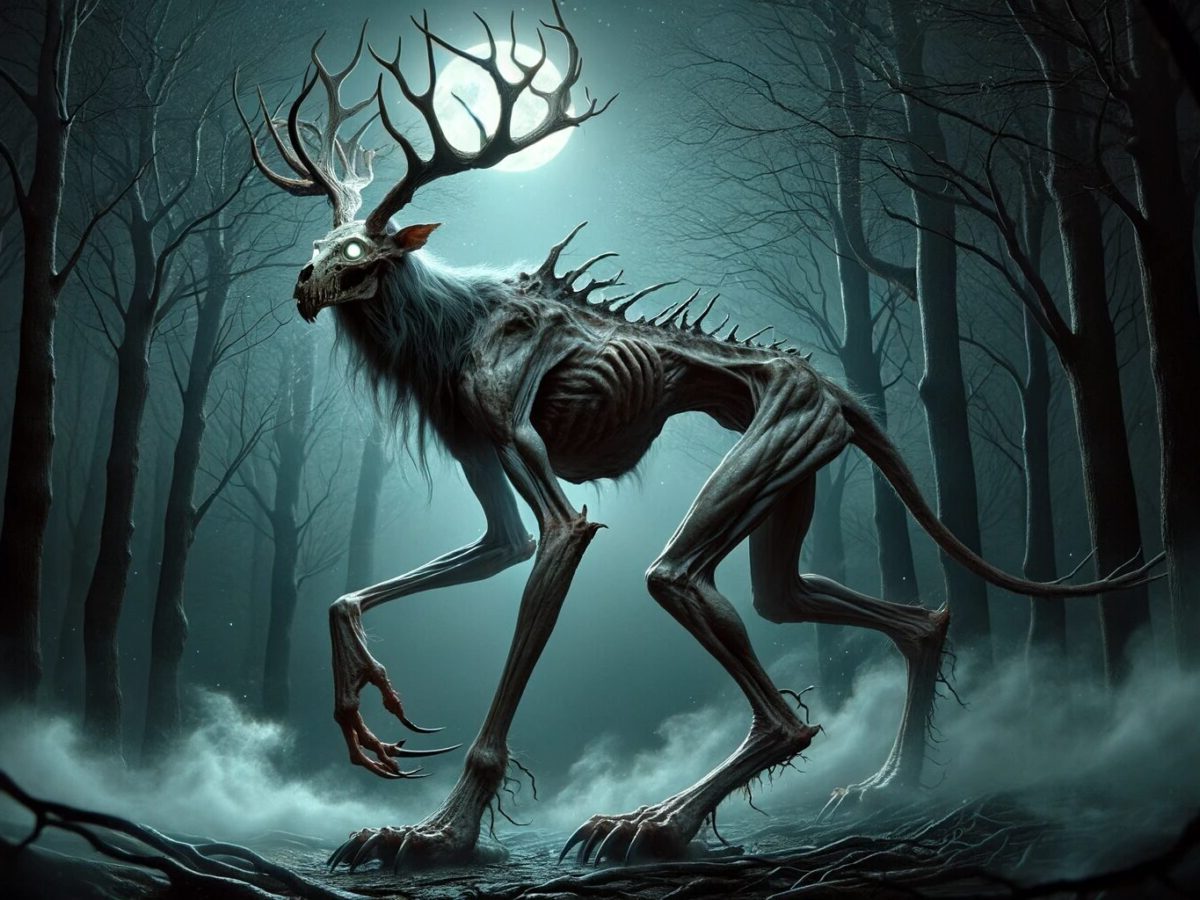
Native American monsters have long fascinated people with their rich lore and chilling tales. These creatures, deeply rooted in indigenous cultures, serve as both cautionary tales and symbols of nature's power. Ever heard of the Wendigo? This terrifying spirit embodies greed and hunger, warning against excess. Or the Skinwalker, a shape-shifting witch feared for its dark magic? Each monster tells a story, reflecting the values and fears of the tribes. From the Thunderbird, a giant bird controlling storms, to the Pukwudgie, a mischievous little being, these legends offer a glimpse into the spiritual world of Native Americans. Dive into these 38 facts and uncover the mysteries behind these legendary beings.
Key Takeaways:
- Native American folklore is filled with fascinating tales of creatures like skinwalkers, Wendigos, Thunderbirds, and more, each with unique abilities and stories that have been passed down through generations.
- These legendary beings serve as cautionary tales, protectors, and punishers, reflecting the rich cultural beliefs and values of the Native American tribes. Their stories continue to captivate and intrigue people to this day.
The Enigmatic World of Native American Monsters
Native American folklore is rich with tales of mysterious creatures. These stories have been passed down through generations, each tribe adding its own unique twist. Let's dive into some fascinating facts about these legendary beings.
Skinwalkers: Shape-Shifting Sorcerers
Skinwalkers are among the most feared creatures in Navajo culture. These beings are said to possess the ability to transform into any animal they desire.
- 01Skinwalkers are often depicted as witches who have gained their powers through dark rituals.
- 02They can mimic the voices of loved ones to lure their victims.
- 03In Navajo, they are called "yee naaldlooshii," which means "with it, he goes on all fours."
- 04Skinwalkers are believed to be able to read human thoughts.
- 05They are often associated with graveyards and are said to dig up graves to steal personal items.
Wendigo: The Spirit of Cannibalism
The Wendigo is a terrifying creature from Algonquian folklore. It is often associated with winter, famine, and cannibalism.
- 06Wendigos are described as gaunt, emaciated beings with glowing eyes.
- 07They are said to have an insatiable hunger for human flesh.
- 08The Wendigo legend is thought to be a cautionary tale about the dangers of greed and gluttony.
- 09Some believe that a person can become a Wendigo by consuming human flesh.
- 10Wendigos are often depicted as having a heart made of ice.
Thunderbird: The Mighty Sky Guardian
The Thunderbird is a powerful creature in many Native American cultures. It is often seen as a protector and a bringer of storms.
- 11Thunderbirds are said to create thunder by flapping their wings.
- 12They are believed to have the ability to shoot lightning from their eyes.
- 13In some stories, Thunderbirds are depicted as giant eagles.
- 14They are often associated with the Great Plains and Pacific Northwest tribes.
- 15Thunderbirds are considered to be messengers of the Great Spirit.
Pukwudgies: Mischievous Little People
Pukwudgies are small, troll-like creatures from Wampanoag folklore. They are known for their trickery and mischievous behavior.
- 16Pukwudgies are said to be able to appear and disappear at will.
- 17They can transform into animals or even balls of light.
- 18Pukwudgies are believed to have the power to control fire.
- 19They are often blamed for causing trouble and mischief in the forest.
- 20Some stories suggest that Pukwudgies can be helpful if treated with respect.
Chupacabra: The Goat Sucker
While not originally a Native American legend, the Chupacabra has become a part of modern folklore in many indigenous communities.
- 21Chupacabras are said to attack livestock, particularly goats, and drain their blood.
- 22They are often described as reptilian creatures with spines along their backs.
- 23The first reported sightings of Chupacabras were in Puerto Rico in the 1990s.
- 24Some believe that Chupacabras are the result of secret government experiments.
- 25Chupacabras are often associated with UFO sightings.
The Deer Woman: A Seductive Spirit
The Deer Woman is a spirit from various Native American tribes, known for her beauty and her ability to lure men to their doom.
- 26Deer Woman is often depicted as a beautiful woman with the legs of a deer.
- 27She is said to appear at dances and social gatherings to seduce men.
- 28Those who follow her are often led to their deaths in the wilderness.
- 29Some believe that Deer Woman punishes those who disrespect women.
- 30She is considered both a protector and a punisher in different stories.
The Uktena: The Horned Serpent
The Uktena is a legendary serpent from Cherokee mythology. It is often described as a giant snake with supernatural powers.
- 31Uktena is said to have a crystal in its forehead that grants great power to its possessor.
- 32It is believed to be nearly invincible, with only a single weak spot on its body.
- 33Uktena is often associated with water and is said to live in deep pools and rivers.
- 34Some stories suggest that Uktena was once a human who was transformed into a serpent.
- 35The sight of an Uktena is considered a bad omen, often foretelling disaster.
The Flying Head: A Terrifying Specter
The Flying Head is a monstrous creature from Iroquois folklore. It is exactly what it sounds like—a giant, disembodied head that flies through the air.
Final Glimpse at Native American Monsters
Native American monsters offer a fascinating peek into the rich tapestry of indigenous folklore. These creatures, from the Wendigo to the Skinwalker, embody cultural values, fears, and lessons passed down through generations. They serve as cautionary tales, moral guides, and spiritual symbols, reflecting the deep connection between Native American communities and their environment.
Understanding these myths provides insight into the diverse traditions and beliefs that have shaped Native American history. It also highlights the importance of preserving these stories for future generations. By exploring these legends, we gain a greater appreciation for the complexity and depth of Native American culture.
So, next time you hear about a mysterious creature in the woods, remember the rich heritage behind these tales. They’re more than just scary stories; they’re a vital part of the cultural fabric that continues to inspire and educate.
Frequently Asked Questions
Was this page helpful?
Our commitment to delivering trustworthy and engaging content is at the heart of what we do. Each fact on our site is contributed by real users like you, bringing a wealth of diverse insights and information. To ensure the highest standards of accuracy and reliability, our dedicated editors meticulously review each submission. This process guarantees that the facts we share are not only fascinating but also credible. Trust in our commitment to quality and authenticity as you explore and learn with us.


